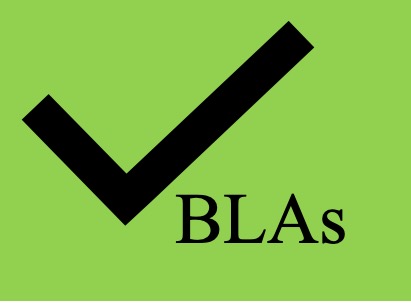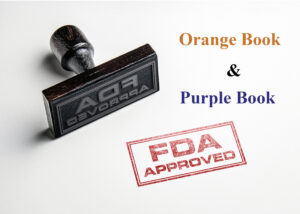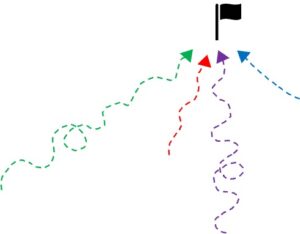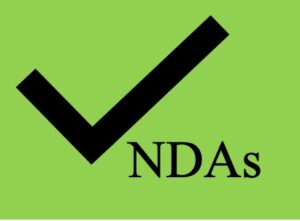- 6 centers at the FDA review and approve consumer products
- 2 centers at the FDA approve therapeutics: CDER and CBER
- CDER and CBER can both approve BLAs and NDAs
- CDER approved 22 BLAs in 2023
- CBER approved 24 BLAs in 2023
In the United States, certain modalities are approved by the Food and Drug Administration (FDA) under a biologic license application (BLA). Other modalities are approved under a new drug application (NDA). In our blog post 2023 Year in Review: approved NDAs, we reviewed the types of modalities approved under NDAs in 2023. Here, we review the modalities approved under BLAs in 2023, whether approved by CDER (Center for Drug Evaluation and Research) or CBER (Center for Biologics and Evaluation and Research).
It is important to understand that there is confusion when referencing a therapeutic as a “CDER drug” or a “CBER drug.” Some in the life science industry will try to classify a modality or therapeutic based on whether it is reviewed by CDER or CBER. But classification based on the center at the FDA reviewing the modality is not accurate. Six centers at the FDA are responsible for approving and regulating consumer products such as medical devices, cosmetics, dietary supplements, electronic radiation emitting products, tobacco products, and therapeutics (such as drugs and other therapies). Two centers at the FDA are responsible for approving therapeutics or modalities, under either a BLA or an NDA: CDER and CBER.
In regards to BLAs, some BLAs are approved by CDER and some BLAs are approved by CBER. So, both CDER and CBER review and approved BLAs. CDER approves the majority of NDAs, but CBER could also approve an NDA. So, both CDER and CBER can review and approve BLAs and NDAs. Thus, classifying a therapeutic as a “CDER drug” does not accurately describe the therapeutic, because it could be approved under an NDA or a BLA. Further, various modalities are approved under an NDA and various modalities are approved under a BLA. Thus, referring to a therapeutic as a “CDER drug” tells you nothing about the therapeutic.
Both CDER and CBER review and approved BLAs for therapeutics and modalities. CDER approves BLAs for protein-based therapeutics, such as antibodies, bispecifics, fusion proteins, and therapeutic proteins. CBER approves BLAs for blood products (such as source plasma), vaccines, tissues, and cell-based therapies.
In 2023, 46 BLAs were approved by the FDA. CDER approved 22 BLAs and CBER approved 24 BLAs.
It is important to note that not all approved BLAs are for products that contain novel or new active ingredients. Some BLA approvals are for products that contain active ingredients that were previously approved. For example, compare Epkinly (BLA 761324) and Eylea HD (BLA 761355). Both BLAs were approved in 2023. However, the active ingredient in Epkinly had never been approved before. The active ingredient in Eylea HD, aflibercept, was previously approved in 2011.
CDER approved BLAs in 2023
In 2023 CDER approved 22 BLAs. Of these 22 BLAs, 11 were antibody products, 4 were BiTE products, 3 were fusion protein products, and 4 were small protein products.
CDER is responsible for approving protein-based therapeutics such as antibodies, fusion proteins, and small proteins under a BLA. CDER also approves peptides, small molecules, and some oligonucleotide-based drugs, but they are typically approved under an NDA, not a BLA.
CDER approved antibody products in 2023
CDER approved 11 antibody products in 2023. Some products contained antibodies that were new and novel, while others had been previously approved. The 11 approved antibody products (Leqembi, Zynyz, Rystiggo, Beyfortus, Veopoz, Entyvio, Cosentyx, Bimzelx, Zymfentra, Omvoh, and Loqtorzi) have different indications, mechanisms of actions, dose, dosage, etc. For example, Leqembi (generic name lecanemab-irmb) is a product containing a novel antibody that is approved for the treatment of Alzheimer’s disease. Its mechanism of action is that it binds to aggregated soluble and insoluble forms of amyloid beta to reduce amyloid beta plaques. Zymfentra (generic name infliximab-dyyb) was approved in 2023 for the treatment of ulcerative colitis and Crohn’s disease. The active ingredient in Zymfentra was previously approved in 1998.
CDER approved BiTE products in 2023
CDER also approved 4 BiTEs or bispecific T cell engagers products in 2023. The 4 BiTE products (Epkinly, Columvi, Talvey, and Elrexfio) differ in their targets, approved indications, dose, dosages, etc. For example, both Epkinly and Columvi target CD20 and CD3 and both are approved for relapsed or refractory diffuse large B-cell lymphoma (DLBCL). Note that Columvi is also approved for large B-cell lymphoma (LBCL). Talvey targets GPRC5D (G protein-coupled receptor class C group 5 member D) and CD3 and is approved for relapsed or refractory multiple myeloma. Elrexfio targets BMCA (B-cell maturation antigen) and CD3, and is approved for relapsed or refractory multiple myeloma.
CDER approved fusion protein products in 2023
CDER approved 3 products containing fusion proteins in 2023 by CDER: Ngenla, Eylea HD, and Ryzneuta. Ngenla was approved for use in pediatric patients who have growth failure. Eylea HD was approved for neovascular (wet) age-related macular degeneration, diabetic macular edema, and diabetic retinopathy. Ryzneuta was approved to decrease the incidence of infection, as manifested by febrile neutropenia.
CDER approved small protein products in 2023
CDER approved 4 products containing small proteins in 2023. Three of these products were for enzyme replacement therapy: Lamzede, Elfabrio, and Pombiliti. Lamzede was approved for the treatment of non-central nervous system manifestations of alpha-mannosidosis. Elfabrio was approved for Fabry disease and Pombiliti was approved for Pompe disease. Vyvgart hytrulo, which is a combination of two small proteins, was approved for treatment of generalized myasthenia gravis (gMG).
CBER approved BLAs in 2023
CBER is responsible for approving BLAs for blood products (such as source plasma), vaccines, tissues, and cell-based therapies. In 2023, CBER approved 24 BLAs. Of these 24 BLAs, 6 were for source plasma, 4 were for cell therapy products, 6 were for vaccines, 3 were for gene therapy products, 2 were for protein-based products, 2 were for assays, and 1 was for a microbiome therapy.
CBER approved 6 source plasma products in 2023, including Alygo. Source plasma has many medical and therapeutic uses, including for use in patients with primary immunodeficiency (PI).
CBER approved 4 cell therapy products in 2023: Lantidra, Omisirge, Casgevy, and Lyfgenia.
CBER approved 6 vaccines in 2023: Ixchiq, Penbraya, Abrysvo, Balfaxar, Cyfendus, Arexvy,
CBER approved 3 gene therapy products in 2023: Roctavian, Elevidys, Vyjuvek,
CBER approved 2 protein-based products in 2023: Adzynma and AltuvIIIO
CBER approved 2 assays in 2023: Elecsys HTLV and Elecys HIV Duo
CBER approved 1 microbiome therapy product in 2023: Vowst
Understanding whether a therapeutic will be approved under an NDA or a BLA, and whether the therapeutic would be approved by CDER or CBER requires a scientific investigation into the composition of matter, mechanism of action, and manufacturing process of that particular therapeutic. Science for Bankers’ Executive Course: Therapeutics and Modalities covers the scientific background of the common modalities (ASOs, siRNAs, small molecules, bispecifics, fusion proteins, vaccines, etc.). The Executive Course: Therapeutics and Modalities is recommended for any professional working in life sciences or biotech.
About Science for Bankers’ Executive Course: Therapeutics and Modalities
- Over 13 hours of content
- About 45 videos
- Each video is under 30 minutes
- Videos include slides, illustrations, animations, and captions
- A study guide is provided
- Covers the 5 main categories of therapeutics: protein-based therapeutics (or large molecules), small molecules, gene therapy, cell therapy, and RNA therapy.
- Covers additional topics such as PK, PD, pre-clinical experiments, clinical trials, recombinant DNA technology, etc.




